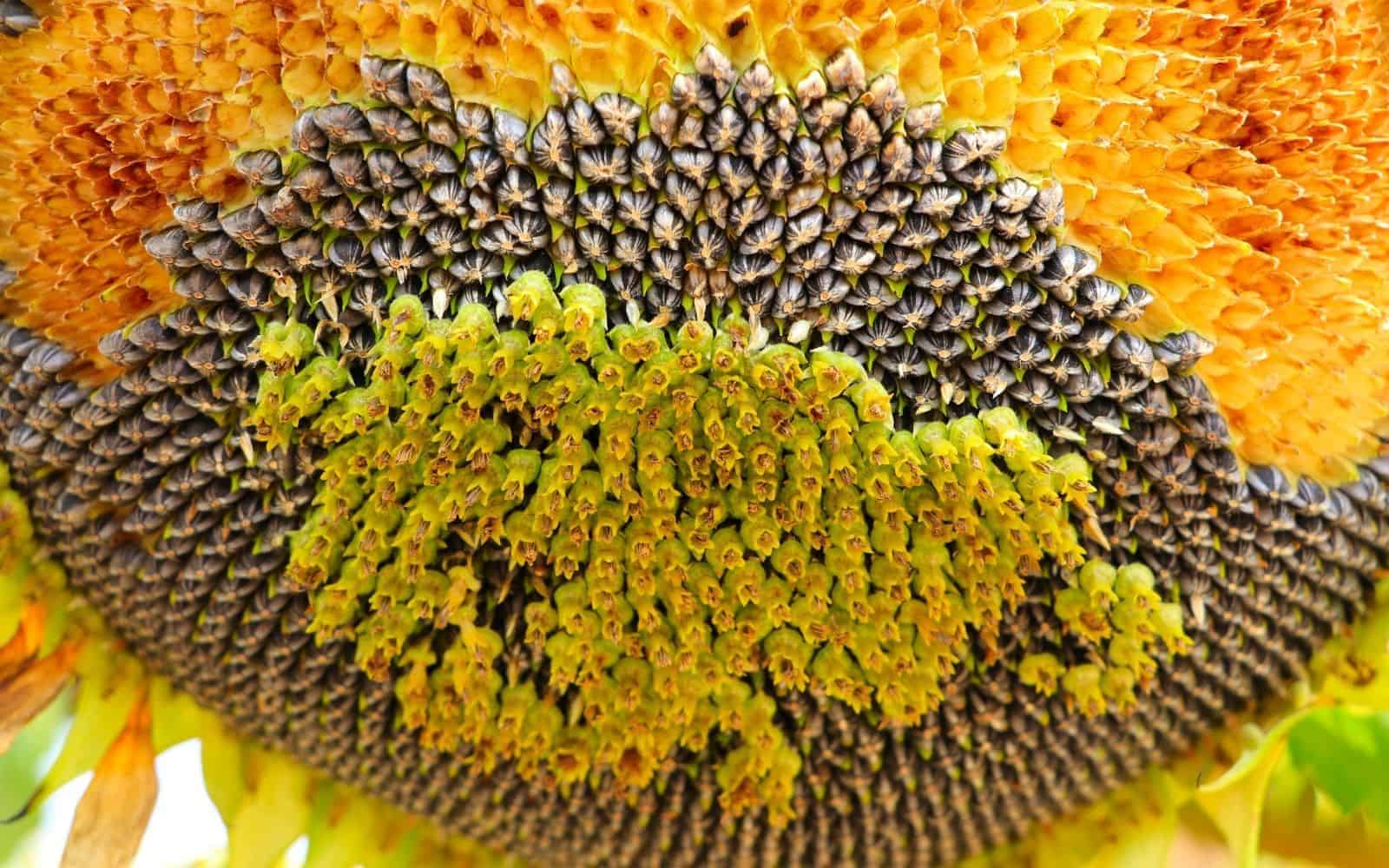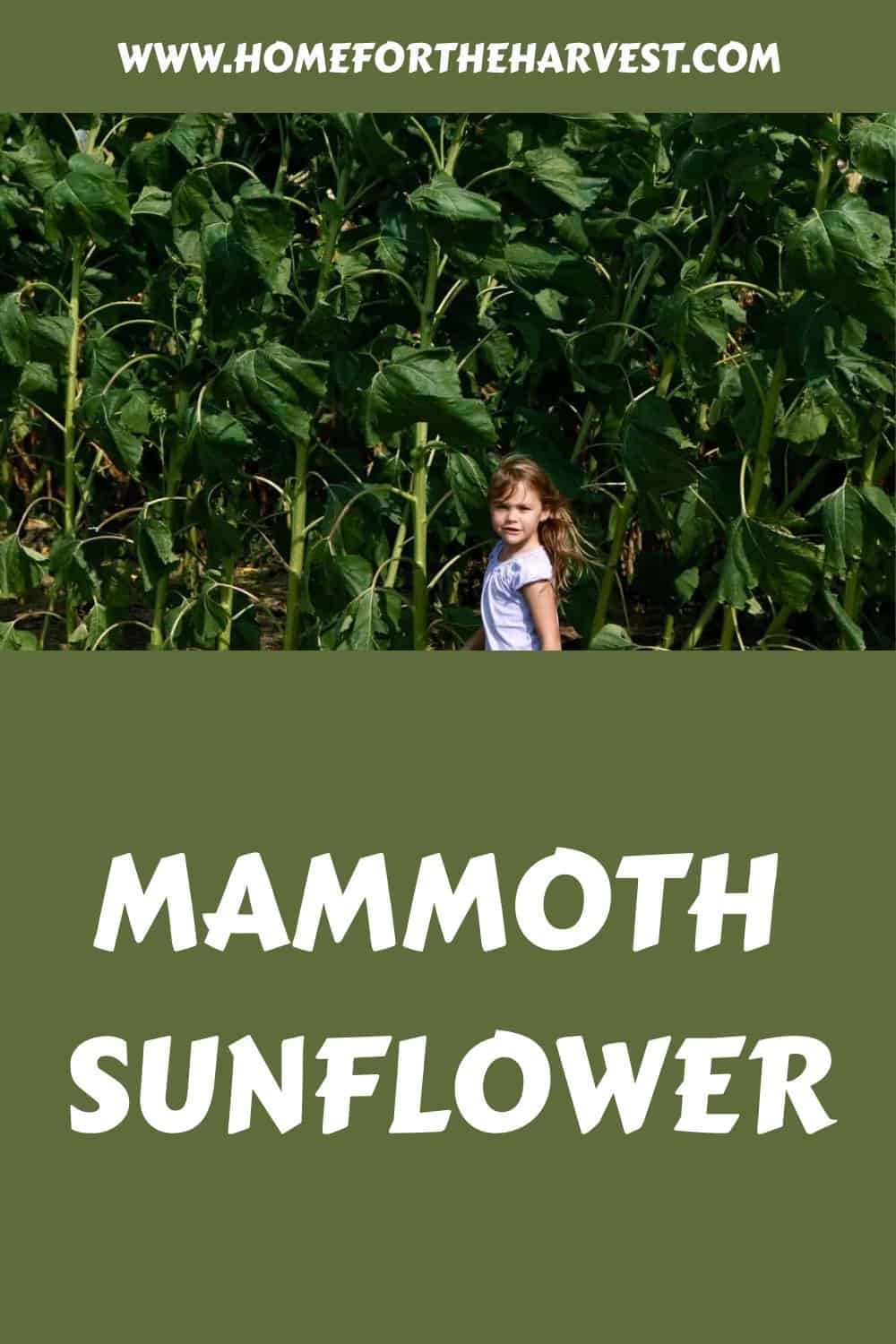Mammoth sunflowers originated in North America and were further developed in Eastern Europe in the 18th century. These classic giant sunflowers easily reach 12 feet in height, with their heavy flowers averaging about one foot across. The plants have strong stems, and the flowers have yellow petals surrounding a brown center. Mammoth sunflowers are also known for their high quality and abundant sunflower seed oil.
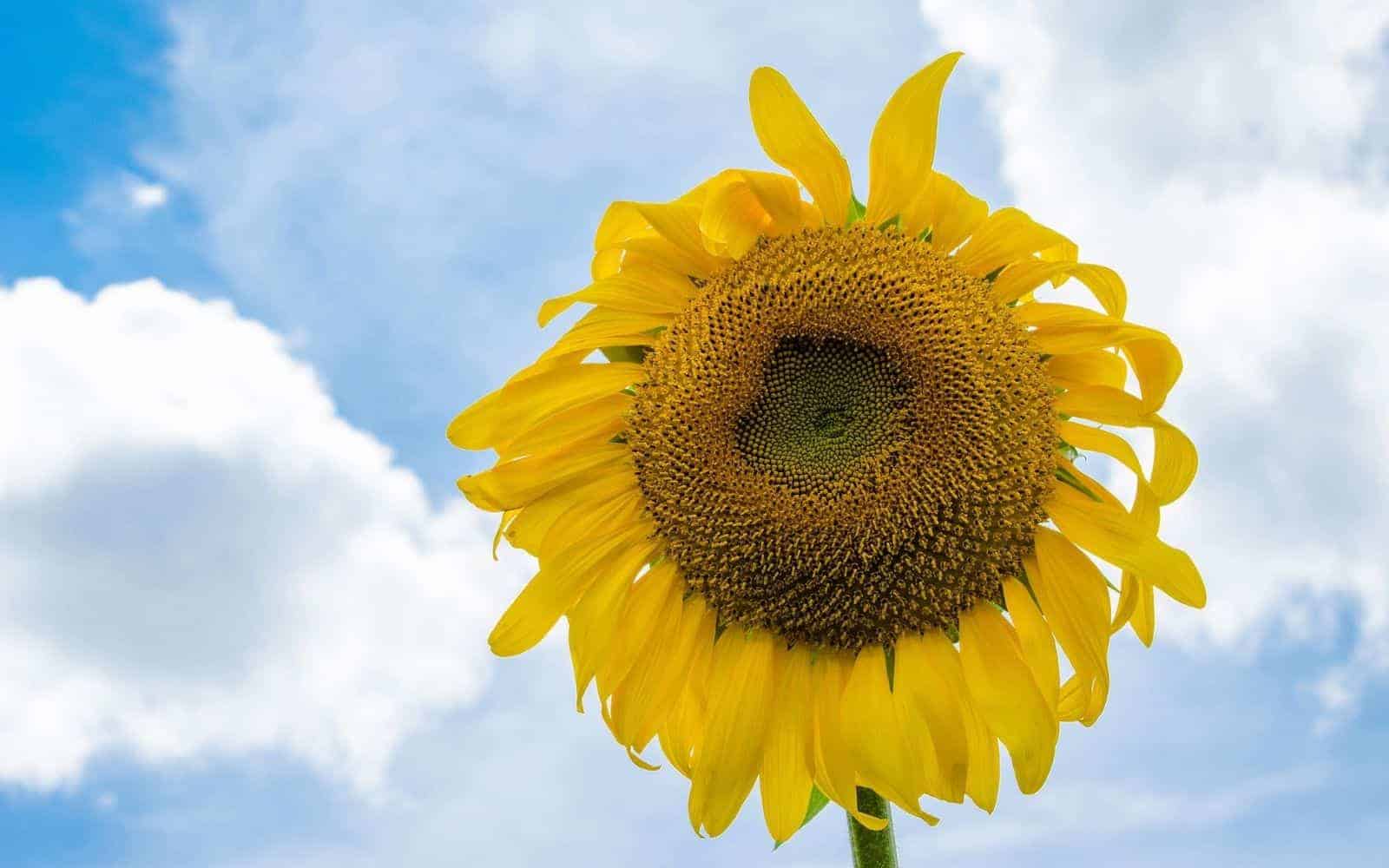
Mammoth sunflower basics
The Mammoth sunflower is a heirloom cultivar known for its tall height and high-quality sunflower seeds. These drought-tolerant plants are easy to grow from seeds, even for beginner gardeners. In late Autumn, their huge heads droop over and can provide nutrient-rich sunflower seeds for hungry birds.
While all sunflower plants originated in North America, this particular giant sunflower variety was developed in Eastern Europe, especially by farmers in Ukraine, Russia, Romania, Bulgaria, and Moldova. As such, it is sometimes referred to as the “Russian Mammoth” sunflower or the “Russian Giant” sunflower. Mammoth Sunflowers and modern hybrids bred from this heirloom are still widely grown in Eastern Europe, with Ukraine as the world’s leading producer of sunflower seeds.
The flowers
Mammoth sunflowers are bright yellow in color. Their striking golden petals surround a brown center. Their color is similar to that of other sunflowers as they have the classic sunflower look.
Mammoth sunflowers produce one flower per plant. This sunflower variety does not grow branches and grows only one flower at the top of a thick stem. This flower is an incredible twelve inches across.
Plant height
The mammoth sunflowers can reach twelve feet in height in normal growing conditions. This is much taller than most other varieties of sunflowers. They surpass nearly every other type of sunflower, with their only common competition perhaps being the Titan Sunflower and the American Giant Hybrid Sunflower.
Mammoth sunflowers really live up to their name, but sometimes they become too tall for their own good. If the plant is dangerously toppling over from its own weight or a forecasted wind, it can be staked with a heavy-duty tree stake.
Sunflower history
Mammoth sunflowers originated in North America and were cultivated by Native Americans. However, Eastern Europe made this plant even more popular in the eighteenth century. Mammoth sunflowers were used during this time period to meet the rising demand for sunflower seed oil. They are still used for their oil because they produce much more than most other sunflower varieties.
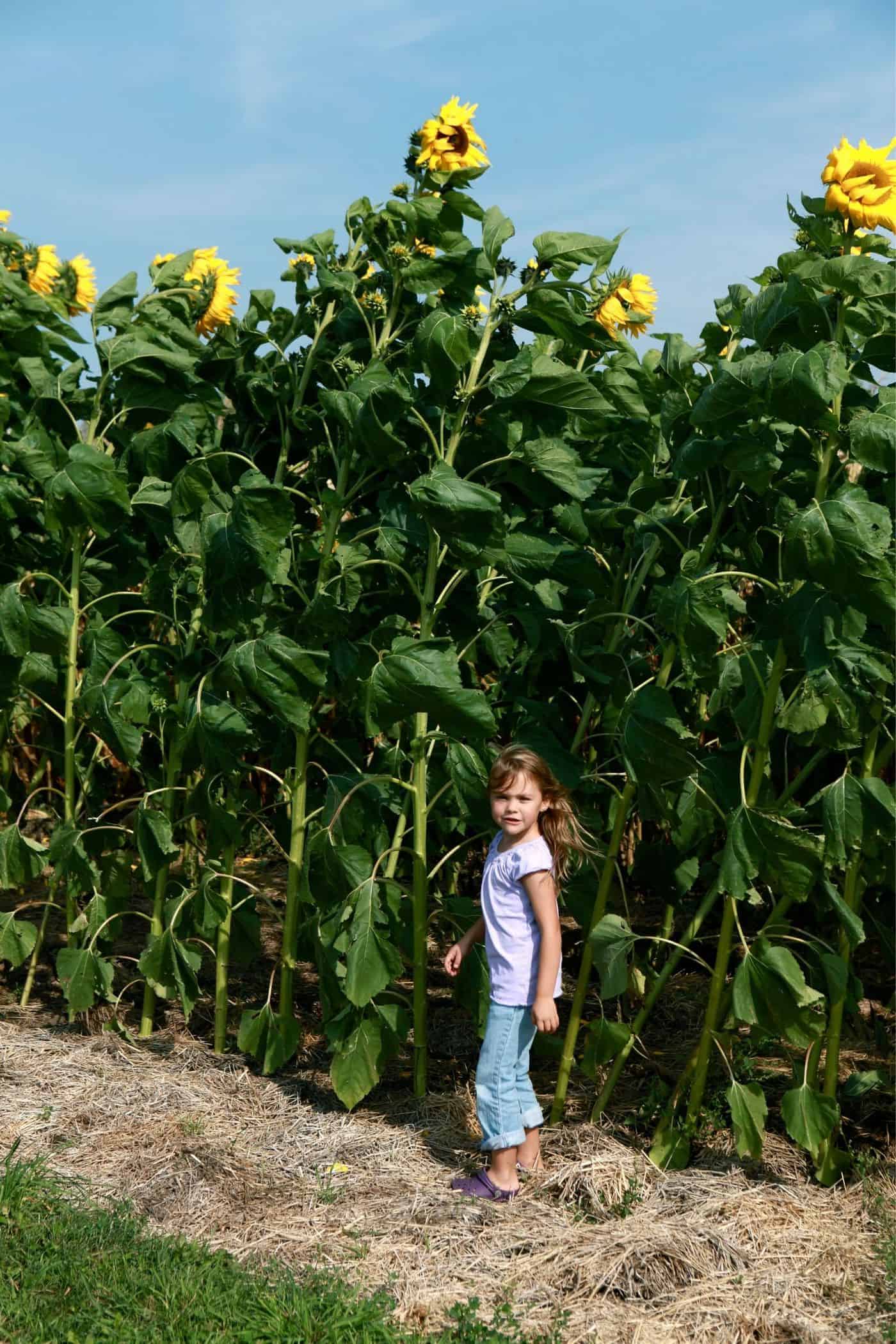
How to plant the Mammoth sunflower
Mammoth sunflowers are, fortunately, very easy to plant. The process consists of finding high-quality seeds, planting them about an inch deep in rich soil, and then keeping the ground consistently moist while the seedling grows. Here are all the details you’ll need to plant Mammoth Sunflowers:
Mammoth sunflower seeds
Look for seeds labeled “Mammoth sunflower,” “Striped Mammoth sunflower,” or “Heirloom Mammoth sunflower.” Mammoth Sunflower seeds can be ordered any time of year and generally ship in the winter or early spring in time for mid-spring planting.
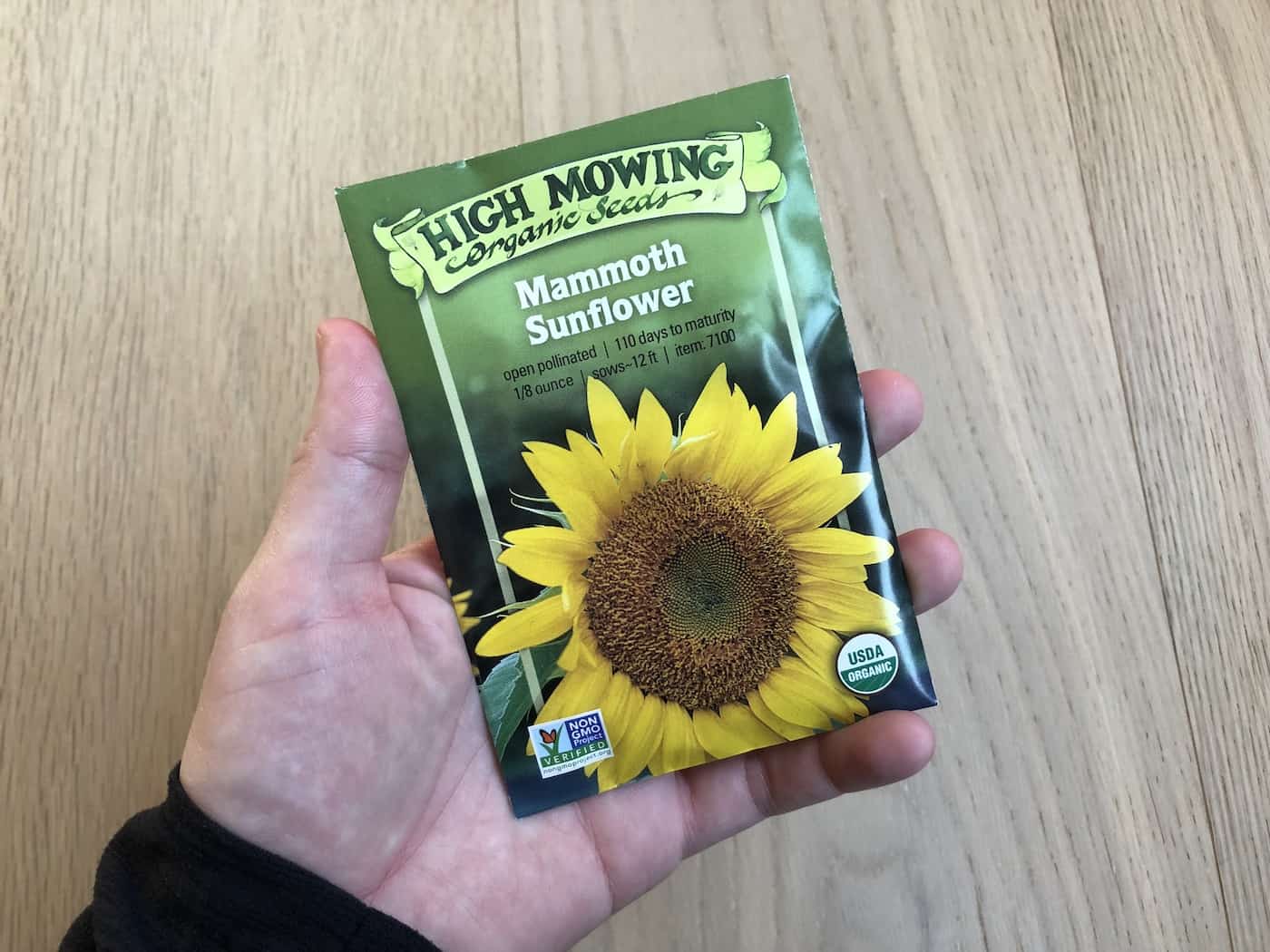
When to plant Mammoth sunflower seeds
Mammoth Sunflower seeds tend to grow best when planted soon after the last frost date in your local area. You can certainly plant them before the last frost date, but beware that the tender seedlings may be damaged by cold temperatures. You can also plant them in early summer (typically into mid-July), but beware that temperatures may cool in the fall before the plants can reach their ultimate mature height.
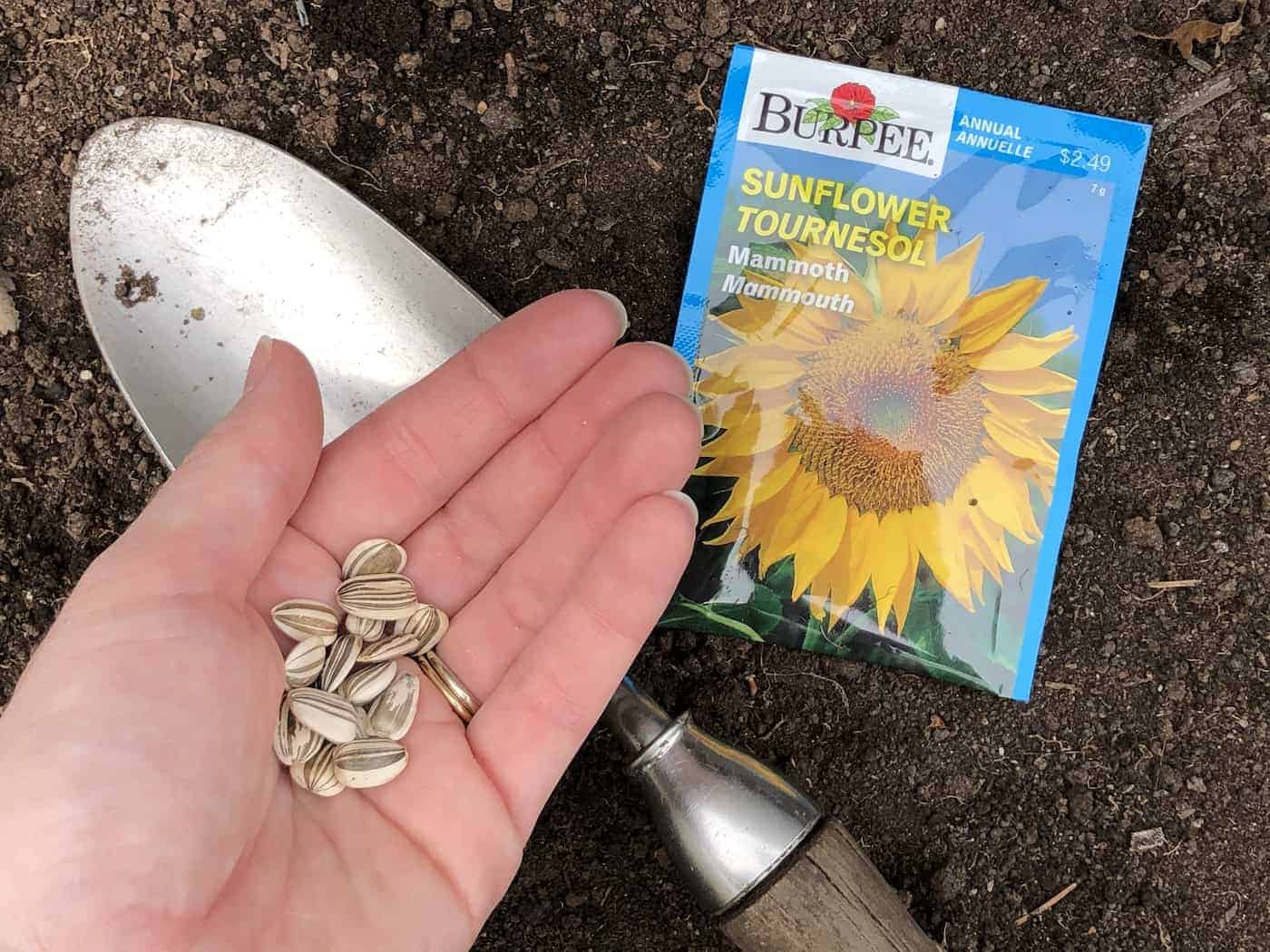
Soil for planting Mammoth sunflower seeds
Mammoth Sunflowers are wonderfully forgiving in the types of soil they can grow in. While they prefer loamy soil, they can be grown in quite sandy soil and are also clay-tolerant. These sunflowers are not picky about their soil and can grow in many different soils.
Loam soil is a nice combination of sand, silt, and clay with an optimal amount of organic matter. It is known for its draining capabilities while still being able to retain water. Loam soil is commonly used for many different plants, and mammoth sunflowers are no exception. While loam soil is ideal for Mammoth sunflowers, a wide variety of soils can be used for planting.
If possible, plant your seeds directly in the ground rather than planting them in a seedling tray or container with potting mix. These seedlings grow incredibly fast and develop the strongest root system if allowed to grow in place directly from the seed. Avoid transplanting seedlings if at all possible.
Planting Mammoth sunflower seeds
Mammoth Sunflower seeds are best planted in a full-sun location after the danger of frost has passed. Prepare the soil by removing any plant debris and weeds prior to planting. Then add an inch or two of organic compost to the top of the soil. Rake the surface smooth.
Sunflower seeds are usually planted about a ½ inch deep in holes that are spaced 18″-24″ apart. If you have many seeds, plant 2-3 in each planting hole. Mammoth Sunflowers usually take about a week to sprout. If multiple sunflower seedlings sprout from the same planting hole, wait until the seedlings have two sets of leaves before thinning to a single plant. In general, leave the plant with the thickest, straightest stem as the remaining plant. Rather than pulling out the other seedlings to thin them, just snip them off at the soil line (being careful not to damage the remaining plant).
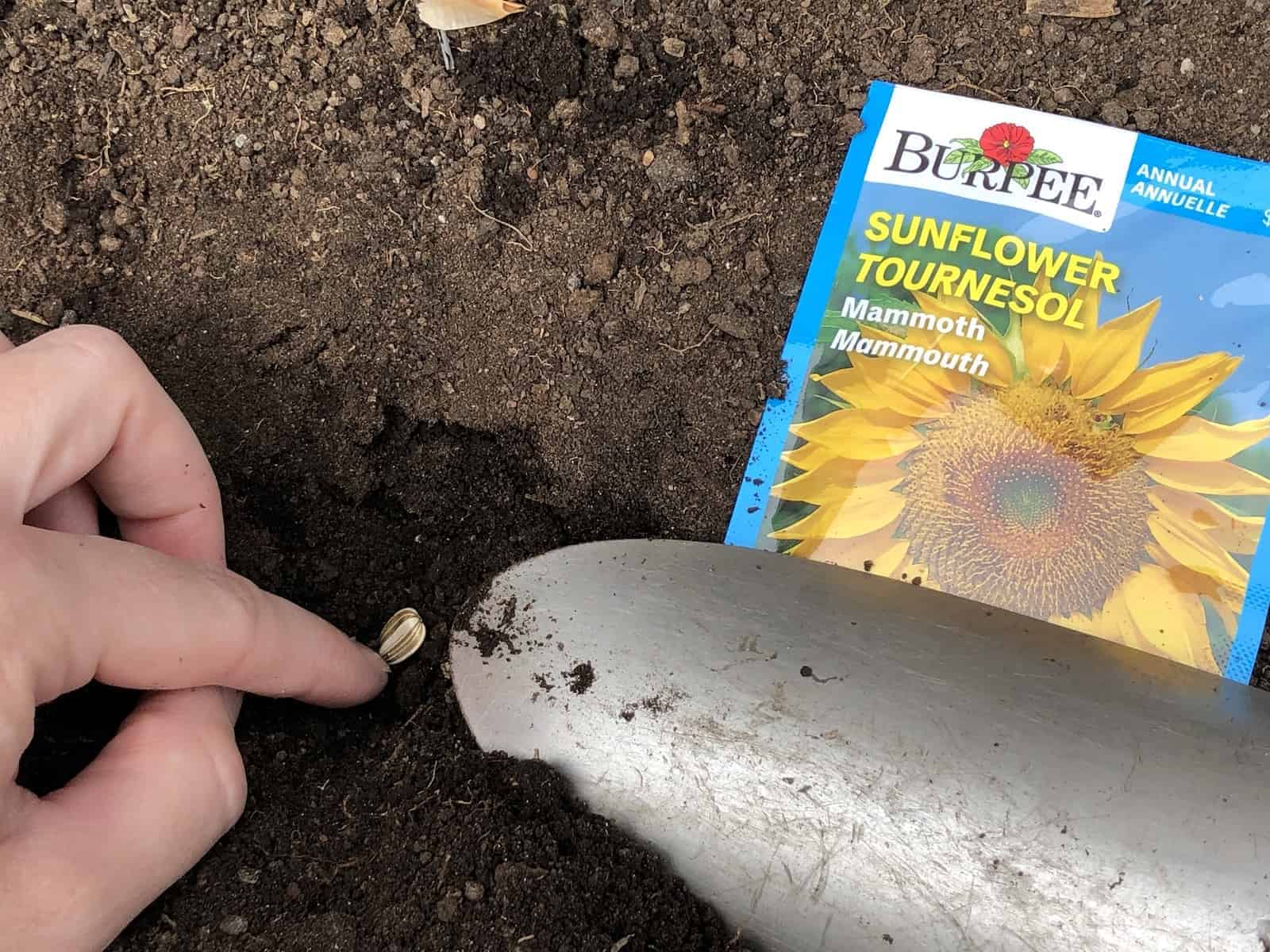
Sunlight requirements for giant Mammoth sunflowers
Mammoth sunflowers need full sun to grow to their full height. They need at least six hours of direct sunlight a day to thrive. However, they grow better/taller with closer to eight hours of direct sunlight. They can be planted in shady spots, but expect the plants to be stunted and the flowers to be small.
You may also wish to plant your sunflowers in a sheltered location. This will give them some protection from the wind. You may also wish to stake your plants if the stalks appear to need them.
Watering Mammoth sunflower plants
Consistent watering of Mammoth Sunflower plants is most important in the 6-week period following planting. Start by keeping the soil surrounding the planted seed consistently moist. Be on the lookout for ponded water on top of the soil which may indicate poor drainage or still-frozen soil. The water should drain freely into the soil and down past the seed without ponding on the surface.
Once the seedlings are established, Mammoth Sunflowers do not need a large amount of water to reach their full potential. Some gardeners do not water their sunflowers at all, letting them live off the natural precipitation and groundwater. To reach giant heights, however, these plants generally do require added water.
While they are drought-tolerant, their impressive height can be stunted by lack of water, especially in the first few months of life. Unless conditions are overly dry, they only need one inch of water per week. If the area you live in receives a lot of rainfall, you may not need to water your sunflowers.
I usually water my sunflowers once weekly if temperatures are mild and twice weekly if the weather is quite hot. Watering right at the soil line is preferable to avoid wasting water and to avoid moisture getting on the foliage of the plants and potentially spreading disease. I also like to water when temperatures are cool first thing in the morning.
Fertilizing Mammoth sunflower plants
While most Mammoth Sunflower plants grow perfectly well without fertilizer, some growers like to add some nutrients to the soil for the best chance at the tallest sunflower. Adding fertilizer can help these heavy feeders grow tall, sturdy stalks if the soil is nutrient deficient.
Fertilizers range from homemade compost to aged manure or even bagged fertilizer products. If using a product, be sure to follow the application instructions on the package. Liquid flower fertilizer products are particularly popular among giant sunflower growers competing to grow the tallest sunflower around. They require frequent application as the nutrients are in solution. For an easier option, use an organic slow-release fertilizer.
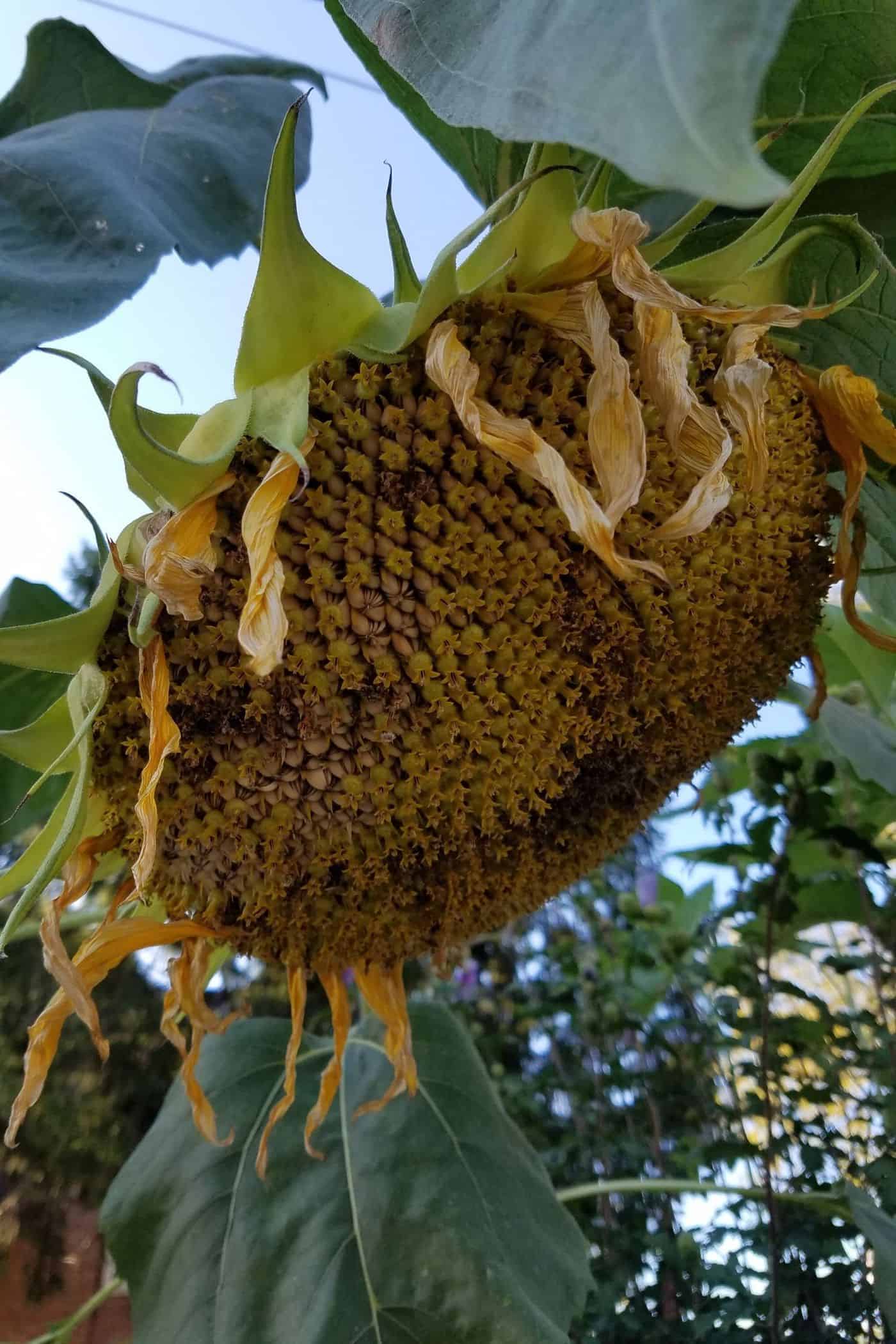
Harvesting Mammoth sunflower seeds
Mammoth Sunflower seeds are highly sought after for their large seed size, flavor, and sunflower oil. The plants usually take about 90 days for the flower to bloom and up to 120 days for the sunflower seeds to fully develop. To harvest the seeds, you can either cut the flower off the stalk before all the seeds have developed and dry the head indoors, or you can simply let the whole head dry out on the stem.
To dry the heads indoors, wait until the sunflower head is maturing, but the back is still yellow. Cut the stalk off about 6 inches below the head of the flower. The seeds on the outside should be ready to harvest, while the inner seeds should not quite be ready yet. Hang each head upside down in a warm, well-ventilated area to let the seeds dry and mature.
To dry the heads on the stalks, beware that hungry critters (birds, squirrels, deer, rabbits) may get to the flower heads before you do unless you protect them with netting, cheesecloth, et cetera. This can be a bit tricky on these tall plants. Once the heads have dried, simply cut the head off!
The sunflower seeds can be harvested once the head is completely dry. Put a bucket under the head to catch the seeds. Use gardening gloves, as the seed head can be somewhat sticky. Then rub the sunflower head so the seeds pop out and fall into the bucket. The seeds can be rinsed with fresh, clean water and set out to dry or coated in a bit of oil and roasted.
